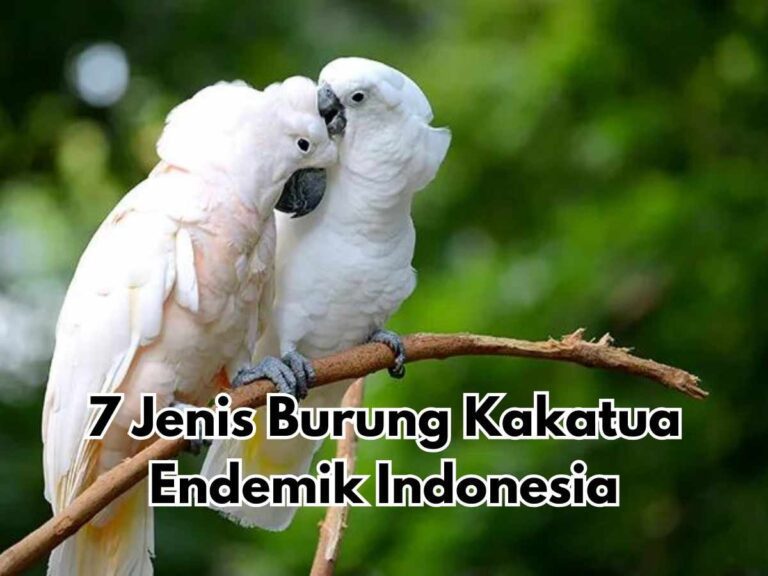
Admin / 16 -October -2023 – Unveiling the Tropical Treasures: Indonesia’s 7 Native Cockatoo Species
Indonesia is endemic to many species of cockatoo. These birds generally have natural habitats in the Wallacea region of Australasia, including parts of Indonesia such as Sulawesi, Nusa Tenggara, Maluku Islands, and Papua. There are 7 species of cockatoo native to Indonesia.
Cockatoos are indeed one of the most popular birds in Indonesia. Its presence attracts attention because of its distinctive ability to mimic various sounds. This bird species can be trained to imitate various sounds, including human, cat, dog, and other sounds. This ability to mimic sounds makes the cockatoo a very interesting pet and is often the main attraction for bird lovers.
In addition to their unique abilities, cockatoos are popular for their beauty. The cockatoo’s uniqueness lies in its crest, which some experts argue is raised when the bird wants to show off, give a greeting, or when it is jumping and dancing with excitement. Generally, this crest gives the impression that the cockatoo is larger, more manly, and more beautiful. Cockatoos have feathers that are predominantly white or black, often with touches of red, pink, or yellow.
There are 7 types of parrots native to Indonesia that we will discuss in this article.
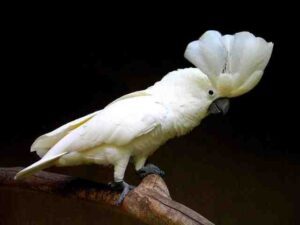
1. White Cockatoo (Cacatua Alba)
The White Cockatoo, also known as the White-crested Cockatoo, is endemic to Maluku and North Maluku. You can find this bird on Halmahera, Ternate, Tidore, Bacan and Obi islands. Its distinctive feature is a white crest that is uniform with the feathers of its entire body, with a slight yellow color under the wings and tail.
2. Tanimbar Cockatoo (Cacatua Goffiana)
The Tanimbar Cockatoo, or Tanimbar Corella, is a small cockatoo endemic to the Tanimbar islands of North Maluku. Although similar to the White Cockatoo, the Tanimbar Cockatoo is smaller in size and has a distinctive pink color on its face.

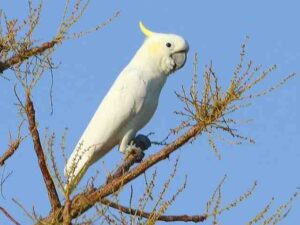
3. Yellow-crested Cockatoo (Cacatua Sulphurea)
The Yellow-crested Cockatoo is one of the most popular and frequently traded cockatoo species. You can find this bird in Nusa Tenggara, Sulawesi, and some of the surrounding small islands. Although similar to the Koki Cockatoo, the Yellow-crested Cockatoo has a smaller size and a brighter yellow, almost orange, crest.
4. Koki Cockatoo (Cacatua Galerita)
The Koki Cockatoo, Large Yellow-crested Cockatoo, or Sulphur-crested Cockatoo, is a large cockatoo species that can be found in Papua and Australia. Similar to the Lesser Yellow-crested Cockatoo, the Koki Cockatoo has a yellow crest, but is larger, with a paler crest color, and rarely has yellow patches on its cheeks.

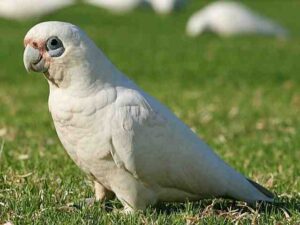
5. Rawa Cockatoo (Cacatua Sanguinea)
The Rawa Cockatoo, also known as the Little Corella, is a lesser-known species of cockatoo in Indonesia. This species can be found in Papua and Australia and is similar to the Tanimbar Cockatoo. The bird is about 35-40 cm long, slightly larger than the Tanimbar Cockatoo, with its entire body white and a touch of pink on its face.
6. Moluccan Cockatoo (Cacatua Moluccensis)
The Moluccan Cockatoo, or Seram Cockatoo, or Salmon-Crested Cockatoo, is a large cockatoo that can reach a length of 52 cm and weigh around 850 grams. It is endemic to South Maluku and is found nowhere else in the world. Distinctive features of the Moluccan Cockatoo are its pink crest, slightly reddish plumage, and a slight yellow color under the wings and tail.

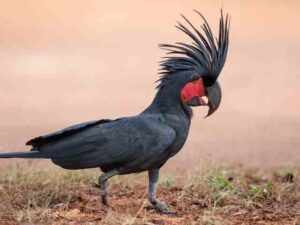
7. King Cockatoo (Probosciger Aterrimus)
The King Cockatoo, or Palm Cockatoo, is one of the largest cockatoos in the world, reaching 60 cm in length and weighing 1.2 kilograms. It has jet-black feathers all over its body, except for the cheeks, which are bright red. The long and spectacular crest makes the King Cockatoo very striking. It can be found in Papua and small parts of northern Australia.
The diversity of parrots in Indonesia is a testament to the country’s natural wealth. All of these species have their own charm and distinctive features, and they are a treasure in Indonesia’s wildlife conservation efforts. By protecting their habitats and reducing illegal trade, we can continue to enjoy the beautiful presence of these parrots in the wilds of Indonesia.
